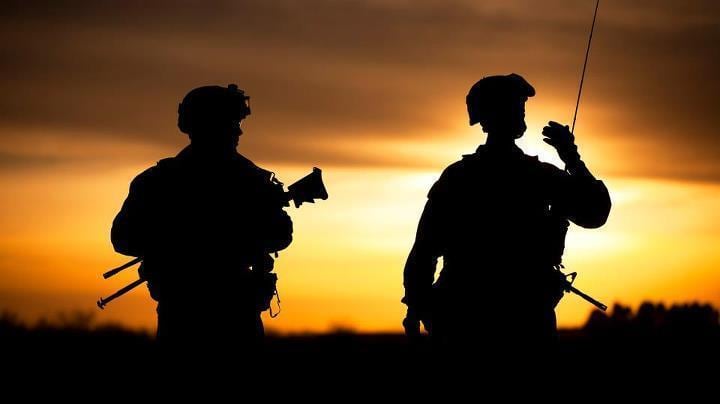The future battlefield will likely contain autonomous robots, lasers and countless drones but beyond the equipment that grabs everyone’s attention at least one military leader says a framework for how to fight in that new arena is what’s most important.
Gen. David Perkins, commander of the Army’s Training and Doctrine Command, shared the evolving “Multi-Domain Battle” concept to a crowd of more than 150 military leaders, government representatives and scientific thinkers at the third annual “Mad Scientist” conference at Georgetown University Tuesday.
The two-day event shares presentations with science fiction-bent thinking to help military leaders hear from the academic community and others on how best to fight future wars. More than 150 papers were submitted ahead of the conference, the winner of the contest was Marine Corps infantry officer Mathison Hall, a senior analyst at Johns Hopkins University Applied Physics Lab.
Hall’s paper, “Patrolling the Infosphere,” presented a scenario of an automated battlefield with human soldiers and Marines in exo-skeleton suits capable of running 40 mph in battle and fighting an artificial “bug” with both biological and cyber capabilities.
During his talk, Hall told the audience that there might be a “Human Horizon” to the battlespace in which the actual fighting happens between machines, which could be 30 to 40 years from now or sooner.
The infantry then likely becomes a combination of special operations forces and civil affairs, areas where humans are still needed on the ground.
TRADOC released the most recent of its papers for the evolving Multi-Domain Battle concept, titled “The Operational Environment and the Changing Character of Future Warfare,” as part of the conference.
The paper identifies threats that go far beyond the current battlefield, looking at how the U.S. military and its allies will keep pace with an “Era of Accelerated Human Progress” over the next 20 years, followed by an “Era of Contested Equality” for the subsequent 15 years.
Meantime, researchers, government and military leaders must take advantage of rapidly-developing technologies such as artificial intelligence, neurologic enhancement, quantum computing, nanotechnology, robotics, additive manufacturing and bio-engineering to keep pace with competitors.
Gone are the days of complete U.S. supremacy, Perkins and his staff conclude. Near-peer competitors include Russia, China, North Korea and Iran, with China closing fast on Russian capabilities, likely to surpass them within the next two decades.
The myriad of challenges must be met with imagination, Perkins told the crowd. In that past emergencies drove change at a terrible cost, such as when the United States entered World War I and World War II. The aim of TRADOC and its partners is to develop capabilities that can change doctrine, creating a structure that allows the military to change on its terms, rather than amid a catastrophe.
Using air, land, sea, cyber and space, future forces will develop a “menu of dilemmas” to present to the enemy.
Speaking to the media after his presentation, Perkins gave the example of concealing radio transmissions. Historically the antenna emitting the signal would be located a distance from the operations center, so that if the enemy discovered the signal and struck it would not destroy the center.
That was one form of concealing the position.
Instead, what might happen with multi-domain capabilities would be to create hundreds or thousands of signals that all look just like the actual transmitter, thereby confusing the enemy and consuming their time and resources trying to figure out which was the real threat.
By the time then enemy has figured it out, Perkins said, our forces have completed the objective and moved on.
The past five years of research along with pending white papers will culminate in a new Army field manual on operations later this year, which will outline the framework for moving to multi-domain battle as an operational concept and eventual Army doctrine, Perkins said.
Todd South has written about crime, courts, government and the military for multiple publications since 2004 and was named a 2014 Pulitzer finalist for a co-written project on witness intimidation. Todd is a Marine veteran of the Iraq War.




